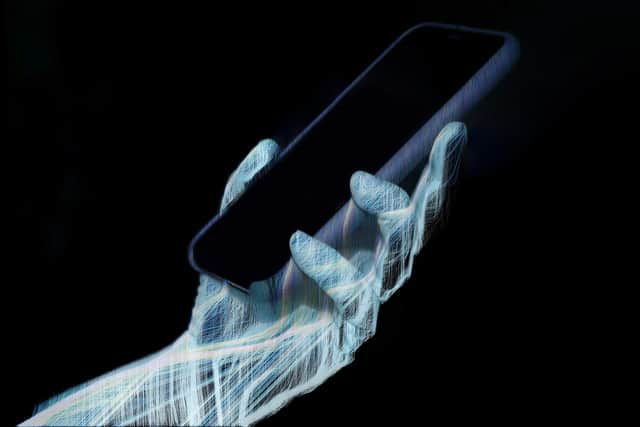Lancaster University researcher wins national photographic competition
and live on Freeview channel 276
Anna Dyson, a PhD researcher in International Relations at Lancaster University, won Best Overall Photo in the external category of the competition, run by the University of Kent's Institute of Cyber Security for Society (ICSS).
The theme of the competition was Living, Learning and Connecting in Cyberspace and people were invited to submit photographs which engage with the human experience of cyberspace and its interconnected hardware and software.
Advertisement
Hide AdAdvertisement
Hide AdAnna’s research focuses on complex socio-technical systems and their implications for defence and security, with a specific interest in remote technologies, robotics, and the contemporary conflict environment.


Her image Beneath the Screen explores people’s deep-rooted and often unconscious dependence on connected devices.
She said: “The image seeks to capture the intertwined nature of humans and their smartphones, which sometimes feel like an essential part of, or even extension of ourselves. Smartphones can be a portal to the wider world, giving us access to goods, services, and social spaces at our fingertips. But they can also be a portal into us as people.
“With such dependence on our smart devices, it can be easy to overlook the data we sometimes unknowingly offer up about our lives, and the ways this data might be harvested or exploited. Similarly, it can be easy to overlook the complex array of components, networks, and activity that goes on beneath the surface of that glossy screen, even when it is not in use.
Advertisement
Hide AdAdvertisement
Hide Ad“I created the image by combining human and computational processes: running a software algorithm on my original photograph using visual processing software. The algorithm builds up layers of the original photographic data in thin strands. I then mapped this back onto the initial photograph using multiple layers. The idea behind this approach was to try to visually emulate the intricate web of networked activity and data underpinning the intertwined human-smartphone relationship.”
The competition was open to University of Kent staff, students and the UK general public - including staff and students at other universities.
Anna works as a Research Associate in the School of Computing and Communications on the PETRAS funded Hipster Project, which explores cyber security and privacy decision making in the development of Internet of Things devices.
She is also a member of the Systems Security Group within Security Lancaster, a multidisciplinary institute focusing on all aspects of cyber security including societal, behavioural, sociological threats, and the legal aspects of network and systems security.
Advertisement
Hide AdAdvertisement
Hide AdLancaster University recently announced it was investing £19m in a new Security and Protection Science initiative.
The investment will build Lancaster’s capabilities in this area, with its cross-disciplinary expertise recognised through being one of only a handful of universities nationally to be identified by the National Cyber Security Centre as an Academic Centre of Excellence in Cyber Security Research and Cyber Security Education.
It will also see the creation of a dedicated Data Cyber Quarter at the university’s Bailrigg Campus, with cutting-edge facilities and partnership and innovation space to support this activity.